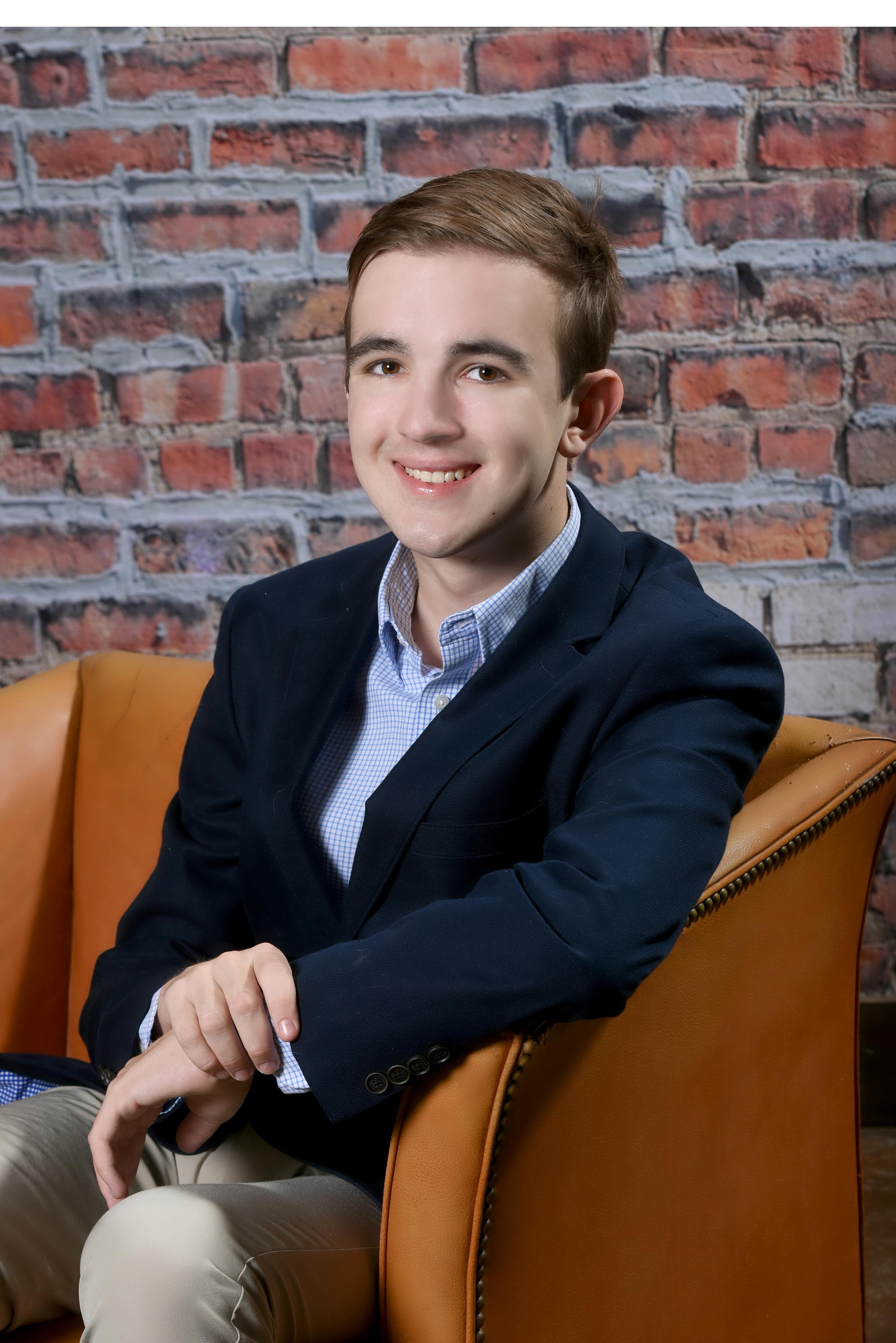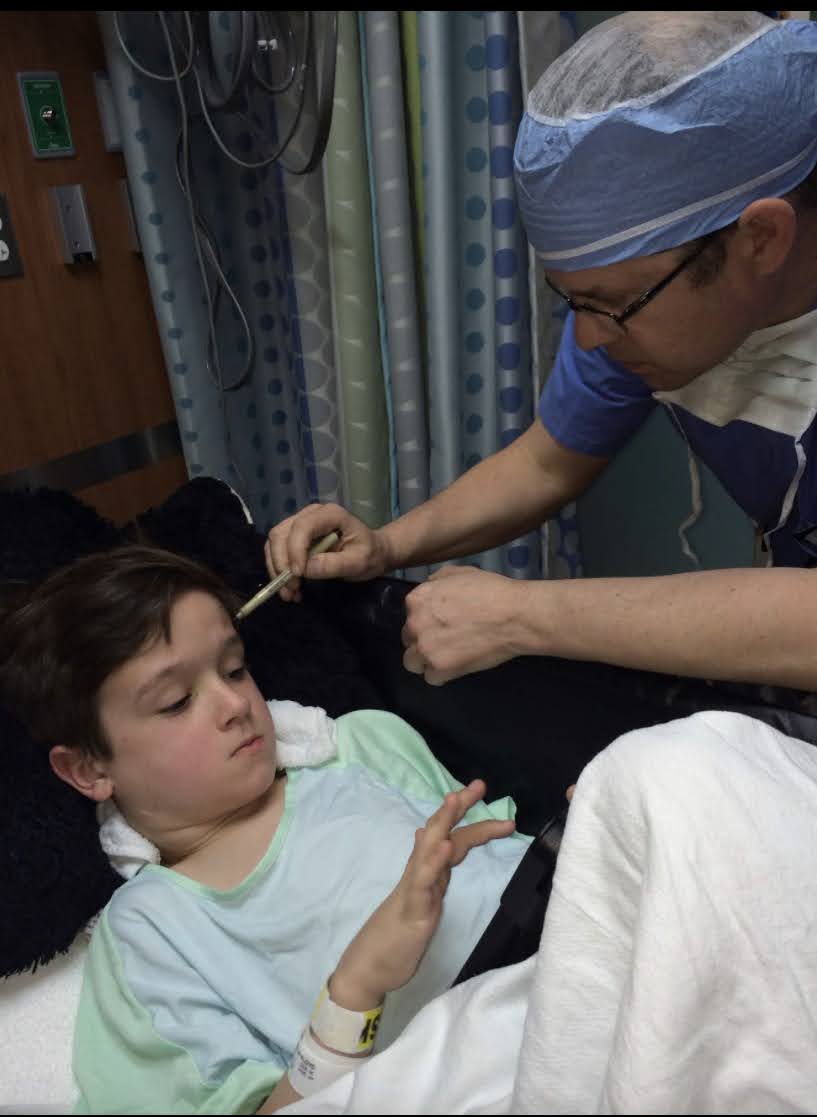
We had the opportunity to connect with Renie and Philip Moss ahead of Neurofibromatosis Awareness Month. Philip has neurofibromatosis type 1 (NF1). It is associated with many features but most often causes growths called neurofibromas (usually benign) as well as characteristic skin and eye findings.1 Malignant or cancerous tumors are rare.1 You can read more on their family’s experiences and insights on navigating NF1 here.
Renie and Philip shared what it was like for Philip to participate in a clinical trial. Philip's journey with NF1 began at the age of six when a small growth on his neck was confirmed to be a plexiform neurofibroma, a rare tumor associated with NF1. The tumor continued to grow, increasing the risk that it would eventually affect Philip’s ability to swallow, breathe, or impact blood flow. However, because of the tumor’s location, surgical removal was not an option.
They tried multiple treatments with no or small effects. Renie shared that after one therapy failed, she was ready to discuss another. Philip’s oncologist said, “Your son is not a pincushion,” and explained that other medications used similar mechanisms and that it did not make sense to continue down the list of possibles therapies. Renie shared, “So every six months he had an MRI. We’d be told the tumor was bigger, but we just had to watch. They’d see us in another six months.” She remembers that the family was stressed and anxious for days leading up to the screening MRIs, which was made worse by missed work and school. “It was horrible – like this glacier just slowly creeping towards you.”
Then in 2015, the Moss family learned of a National Institutes of Health (NIH) clinical trial, but Renie said, “We just kind of shrugged. We were so deflated.” They still agreed to send Philip’s records to see if he was a candidate. A few months later, they learned that Philip was a candidate for the trial for a new therapy called an MEK inhibitor, and he got started in September.
Renie explained that this new treatment didn’t cause the same challenging side effects as typically seen with traditional chemotherapy, but there were side effects as well as trips to the NIH every three months early on. Philip shared that he was missing a lot of school during this time, doing his best to deal with the side effects, and sleeping a lot. He stressed that it was crucial that he was transparent with his teachers so they could work with him. He also found hobbies that he could enjoy despite being tired more often than his peers, who were participating in athletic activities.
After about six months, the side effects thankfully dwindled, and the treatment was working! At the one-year mark, the tumor was 36% smaller. After almost five years of treatment, it was over 60% smaller. His airway was clearer, and there was significant cosmetic improvement. Renie remembers the day that Philip came home from school and said, “You know, nobody asks me what’s wrong with my neck anymore.” They are grateful that Philip has always been well supported by the school system, his teachers, and his peers, but she knows that children can be cruel. She added, “The psychosocial improvements [related to the cosmetic improvements] can mean a lot for kids as they’re growing up.”
 The approval of the MEK inhibitor selumetinib (Koselugo) by the FDA in 2020 marked a significant milestone for Philip, affirming the efficacy of the treatment that had transformed his life. Philip reflected on this journey with, “So being as young as I was when it was happening, I couldn’t really grasp the reality of how dangerous things could have been. In hindsight, I see how serious it was, and I’m really glad that it has been as successful as it has.”
The approval of the MEK inhibitor selumetinib (Koselugo) by the FDA in 2020 marked a significant milestone for Philip, affirming the efficacy of the treatment that had transformed his life. Philip reflected on this journey with, “So being as young as I was when it was happening, I couldn’t really grasp the reality of how dangerous things could have been. In hindsight, I see how serious it was, and I’m really glad that it has been as successful as it has.”
The Moss family appreciates the opportunity to contribute to medical research and pave the way for future treatments that will benefit other families. Philip’s story sheds light on the transformative impact of medical research and the hope it brings to individuals facing rare diseases. It underscores the importance of continued investment in scientific innovation to improve outcomes for patients worldwide.
You can watch the interview with Renie and Philip Moss below.
Sources
1. Friedman JM. Neurofibromatosis 1. 1998 Oct 2 [Updated 2022 Apr 21]. In: Adam MP, Feldman J, Mirzaa GM, et al., editors. GeneReviews® [Internet]. Seattle (WA): University of Washington, Seattle; 1993-2024. Available from: https://www.ncbi.nlm.nih.gov/books/NBK1109/



